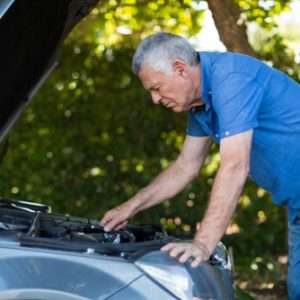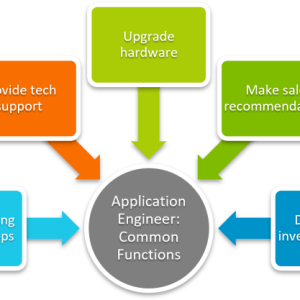Understanding the Problem
Your car engine cutting out can be a frustrating and potentially dangerous experience. It’s crucial to understand the possible causes to diagnose and fix the issue effectively. This guide will walk you through common reasons and troubleshooting steps. It is a complex problem.
Common Causes of Engine Cut-Outs
Several factors can contribute to your engine suddenly stopping. Here are some of the most frequent culprits:
- Fuel System Issues: Problems with the fuel pump, fuel filter, or fuel injectors.
- Ignition System Problems: Faulty spark plugs, ignition coils, or distributor.
- Sensor Malfunctions: Defective sensors like the crankshaft position sensor or mass airflow sensor.
- Vacuum Leaks: Leaks in vacuum hoses can disrupt the air-fuel mixture.
- Electrical Problems: Issues with the battery, alternator, or wiring.
Troubleshooting Steps
When your engine cuts out, follow these steps to help identify the cause:
- Check the Fuel Level: Ensure you have enough fuel in the tank.
- Listen for the Fuel Pump: Turn the ignition key to the “on” position (without starting the engine) and listen for the fuel pump priming.
- Inspect Spark Plugs: Check the condition of the spark plugs for wear or damage.
- Scan for Error Codes: Use an OBD-II scanner to check for any stored diagnostic trouble codes (DTCs).
These steps can help you narrow down the potential causes. It’s important to be methodical.
Preventative Maintenance
Regular maintenance can significantly reduce the risk of engine cut-outs. Consider these preventative measures:
- Regular Oil Changes: Keep your engine properly lubricated.
- Fuel Filter Replacement: Replace the fuel filter according to the manufacturer’s recommendations.
- Spark Plug Replacement: Replace spark plugs at the recommended intervals.
- Check and Replace Vacuum Hoses: Inspect vacuum hoses for cracks or leaks.
FAQ: Car Engine Cutting Out
Q: What does it mean when my car engine cuts out while driving?
A: It means the engine is suddenly losing power and stopping. This can be due to various reasons, including fuel, ignition, or sensor problems. It’s a serious issue that needs immediate attention.
Q: Can a bad battery cause my engine to cut out?
A: Yes, a weak or failing battery can cause the engine to cut out, especially if the alternator isn’t providing sufficient power. The battery is crucial for starting and running the car.
Q: How much does it cost to fix an engine cut-out problem?
A: The cost varies greatly depending on the cause. A simple fix like replacing a spark plug might cost $50-$100, while a more complex repair like replacing a fuel pump could cost several hundred dollars. Diagnosis is key to determining the cost.
When to Seek Professional Help
While some troubleshooting steps can be performed at home, certain situations require professional assistance. If you’re not comfortable working on your car or if you’ve tried the basic troubleshooting steps without success, it’s best to consult a qualified mechanic. They have the tools and expertise to diagnose and repair complex engine problems. Don’t hesitate to seek help.
Understanding Diagnostic Trouble Codes (DTCs)
OBD-II scanners can reveal valuable information about the cause of your engine cut-out. These scanners read Diagnostic Trouble Codes (DTCs), which are codes that correspond to specific problems within the vehicle’s systems. Here are a few examples:
- P0300: Random/Multiple Cylinder Misfire Detected
- P0301-P0306: Cylinder Misfire Detected (specific cylinder number)
- P0171: System Too Lean (Bank 1)
- P0174: System Too Lean (Bank 2)
- P0335: Crankshaft Position Sensor “A” Circuit Malfunction
Knowing the meaning of these codes can help you pinpoint the source of the problem. However, remember that a DTC is just a starting point for diagnosis.
The Role of Sensors
Modern car engines rely heavily on sensors to monitor various parameters and adjust engine performance accordingly. When a sensor malfunctions, it can send incorrect data to the engine control unit (ECU), leading to engine cut-outs. Common culprit sensors include:
- Crankshaft Position Sensor (CKP): Monitors the position and speed of the crankshaft.
- Mass Airflow Sensor (MAF): Measures the amount of air entering the engine.
- Oxygen Sensor (O2): Measures the oxygen content in the exhaust gases.
- Throttle Position Sensor (TPS): Monitors the position of the throttle plate.
A faulty sensor can disrupt the delicate balance of the engine’s operation. It’s a critical component.
Fuel System Deep Dive
The fuel system is responsible for delivering the correct amount of fuel to the engine. Problems within this system can easily cause engine cut-outs. Key components to consider include:
- Fuel Pump: Delivers fuel from the fuel tank to the engine.
- Fuel Filter: Removes contaminants from the fuel.
- Fuel Injectors: Spray fuel into the engine’s cylinders.
- Fuel Pressure Regulator: Maintains the correct fuel pressure.
A clogged fuel filter, a failing fuel pump, or leaky fuel injectors can all contribute to engine stalling. It’s a complex system that requires careful attention.
Electrical System Considerations
The electrical system provides the power needed to start and run the engine. Issues with the battery, alternator, or wiring can lead to engine cut-outs. Consider these points:
- Battery: Provides the initial power to start the engine.
- Alternator: Charges the battery and provides power to the electrical system while the engine is running.
- Wiring: Connects all the electrical components.
A loose battery cable, a failing alternator, or damaged wiring can all cause intermittent engine problems. Check for corrosion and secure connections.




